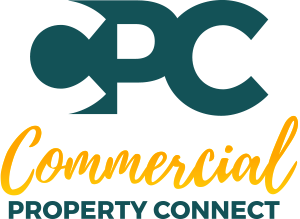Is a Gross Lease Better than a Triple Net Lease?
When we begin working with new clients that are leasing commercial space, we always educate them on the different types of lease structures. Even with those that have leased space before and THINK they understand the differences in a lease structure, there is usually some misunderstanding.
We ask that even seasoned clients spend some time with us when we begin working together. We are not only learning about them and their needs, but we are educating them about the terminology used in commercial real estate to make sure we are all starting our journey together on the same page. An area of confusion is very often the various types of lease structures. Most clients have heard of a Triple Net Lease (NNN lease), but often they really do not understand how it differs from all the other types of leases. And in many cases, they go in thinking they do or do not want a NNN lease because they think it is not as good as something else. The short answer…one is not “better” than another, it is however important to understand the mechanics of each structure.
We will walk you through the basics of the most common lease types here. Often the type of lease being offered depends on the type of building, and sometimes it is as simple as how the HVAC is set up.
Full-Service Lease:
A full-service lease means that a tenant writes one single check for their rent, and it includes all their services. This usually includes the cost of Janitorial Services, Electric, Common Area Maintenance expenses (CAM), Property Insurance and Real Estate Taxes. It is most common to find a Full-Service Lease structure used in office buildings. In office building the individual offices are not likely to have individually metered A/C, so it makes sense that the Landlord pays for the electric usage and builds that into the rent amount from the tenant.
Full-Service Net of Janitorial:
This is a full-service lease as described above but excludes janitorial services. In this type of lease, the tenant would either do their own janitorial or contract with a vendor directly to provide that service for them.
Full-Service Net of Electric:
This is a full-service lease as described except it does not include the cost of electric usage. In this structure the tenant may have to set up their electric directly with the utility company and pay it directly. It may also be paid separately from base rent to the Landlord and might vary based on usage.
Gross Lease:
A Gross Lease means that the rent includes CAM, Insurance and Real Estate Taxes. The tenant is responsible for both their janitorial and their electric. This is common in many industrial or flex properties and is sometimes even referred to as a “Industrial Gross Lease”.
Modified Gross Lease:
A modified gross lease is a gross lease as described above but the Landlord excluding one or two of the triple net expenses (CAM, Insurance or Real Estate Taxes). It will also be referred to as a “double Net Lease” or a “Single Net Lease” which infers that either one or two of the NNN’s is being paid by the tenant. Again, in this scenario the tenant may be paying that expense directly to the source or they may just write that check to the Landlord to reimburse them for the expense. In rare cases Modified Gross can also mean Full Service without Trash Pickup.
Triple Net Lease (NNN Lease):
In a NNN lease the tenant is responsible for all the operating expenses we itemized in the other structures separately from their base rent. Their base rent does not include ANY operating expenses. This is the most common lease structure found in retail properties. There is generally a per square foot NNN expense quoted along with the rent per square foot to give the tenant an idea of what those expenses run.
Another important term used in all the structures except NNN is the term “Expense Stop”. This term means that the owner paid expenses up to a specified amount is identified as the “Base Year”. Then beginning in the second year of the lease the expenses that exceed the base year expenses or expense stop are passed through to the tenants based on their pro-rata share of the buildings rentable space.
If you were following that, the takeaway here is that the tenant is going to pay for the expenses one way or another. A “Full Service” lease does not mean you get away without paying any expenses because you will still have to pay your share if they exceed the base year amount that was used to determine your Base Rental Rate
This can make shopping for space and easily comparing options very deceiving. Let’s walk through the actual cost of the same space on different lease structures:
This example means the Full-Service lease would reflect a $17.10 Per Square Foot rate.
A Triple Net Lease would reflect a $12 Per Square Foot Lease rate.
At the end of the day the tenant is still paying $1,425 per month either way! But it would sure seem like a better deal to choose a space at $12 a square foot, wouldn’t it?
Make sure you have a professional representing you in your search. You need to know that you are comparing apples to apples to make the best choice. You must also know what to expect a year or two down the road. Surprises are rarely a good thing when it comes to Commercial Real Estate.








